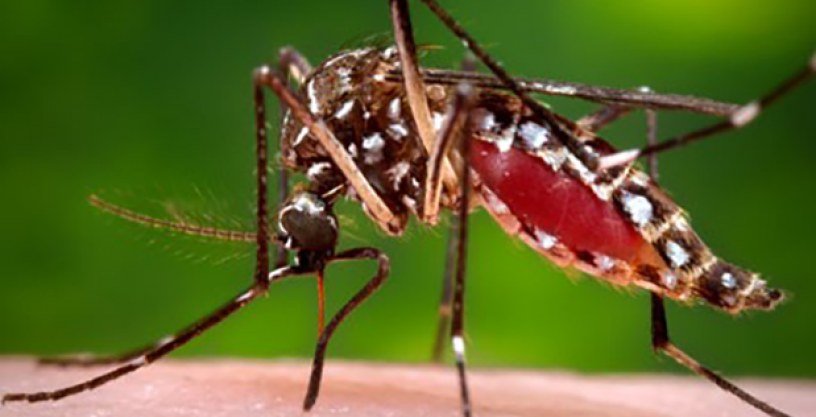
ReVector researchers have expertise in synthetic biology, human microbiome, and mosquito studies
Nov 6, 2020
The American Society for Microbiology estimates that there are trillions of microbes living in or on the human body that constitute the human microbiome1. The human skin microbiome (HSM) acts as a barrier between humans and our external environment, protecting us from infection, but also potentially producing molecules that attract mosquitos. Mosquitos are of particular concern to the Department of Defense, as they transmit pathogens that cause diseases such as chikungunya, Zika, dengue, West Nile virus, yellow fever, and malaria. The ReVector program aims to maintain the health of military personnel operating in disease-endemic regions by reducing attraction and feeding by mosquitos, and limiting exposure to mosquito-transmitted diseases.
Genome engineering has progressed to the point where editing the HSM to remove the molecules that attract mosquitos or add genes that produce mild mosquito repellants are now possible. While the skin microbiome has naturally evolved to modulate our interactions with the environment and organisms that surround us, exerting precise control over our microbiomes is an exciting new way to provide protection from mosquito-borne diseases.
In order to advance that concept, DARPA has awarded ReVector Phase 1 contracts to two organizations: Stanford University and Ginkgo Bioworks. These performers are tasked with developing precise, safe, and efficacious technologies to modulate the profile of skin-associated volatile molecules by altering the organisms that are present in the skin microbiome and/or their metabolic processes.
“The efforts that were selected have assembled teams with expertise in synthetic biology, human microbiome, and mosquito studies,” noted Dr. Linda Chrisey, ReVector program manager. “The cross-disciplinary make-up of the teams enables the broad knowledge and skill set needed to address ReVector challenges and positions them to create an innovative solution to protect warfighters from mosquitos.”
Phase 1 of the ReVector program (18 months) will focus on modifying in vitro microbiomes, Phase 2 (18 months) will focus on modifying microbiomes of animal models, while Phase 3 (12 months) will focus on clinical tests. Final products from the end of each of the three phases will be tested and evaluated by U.S. government laboratories for their ability to repel mosquitos.
The research teams supporting the ReVector program each must submit plans for early and continued engagement with federal regulators to inform their proposed interventions, facilitate future clinical testing, and ultimately chart a course for deployment in the field. DARPA also anticipates engagement with the U.S. Food and Drug Administration (FDA) and the Environmental Protection Agency (EPA) at a minimum, and plans to enlist the guidance of independent experts in ethical, legal, and social implications of new biotechnologies.
Image Caption: Credits: Centers for Disease Control and Prevention (https://www.cdc.gov/ncezid/dvbd/media/stopmosquitoes.html)
1 https://www.asmscience.org/content/report/faq/faq.3
# # #
Media with inquiries should contact DARPA Public Affairs at outreach@darpa.mil
Associated images posted on www.darpa.mil and video posted at www.youtube.com/darpatv may be reused according to the terms of the DARPA User Agreement, available here: http://go.usa.gov/cuTXR.
Tweet @darpa
